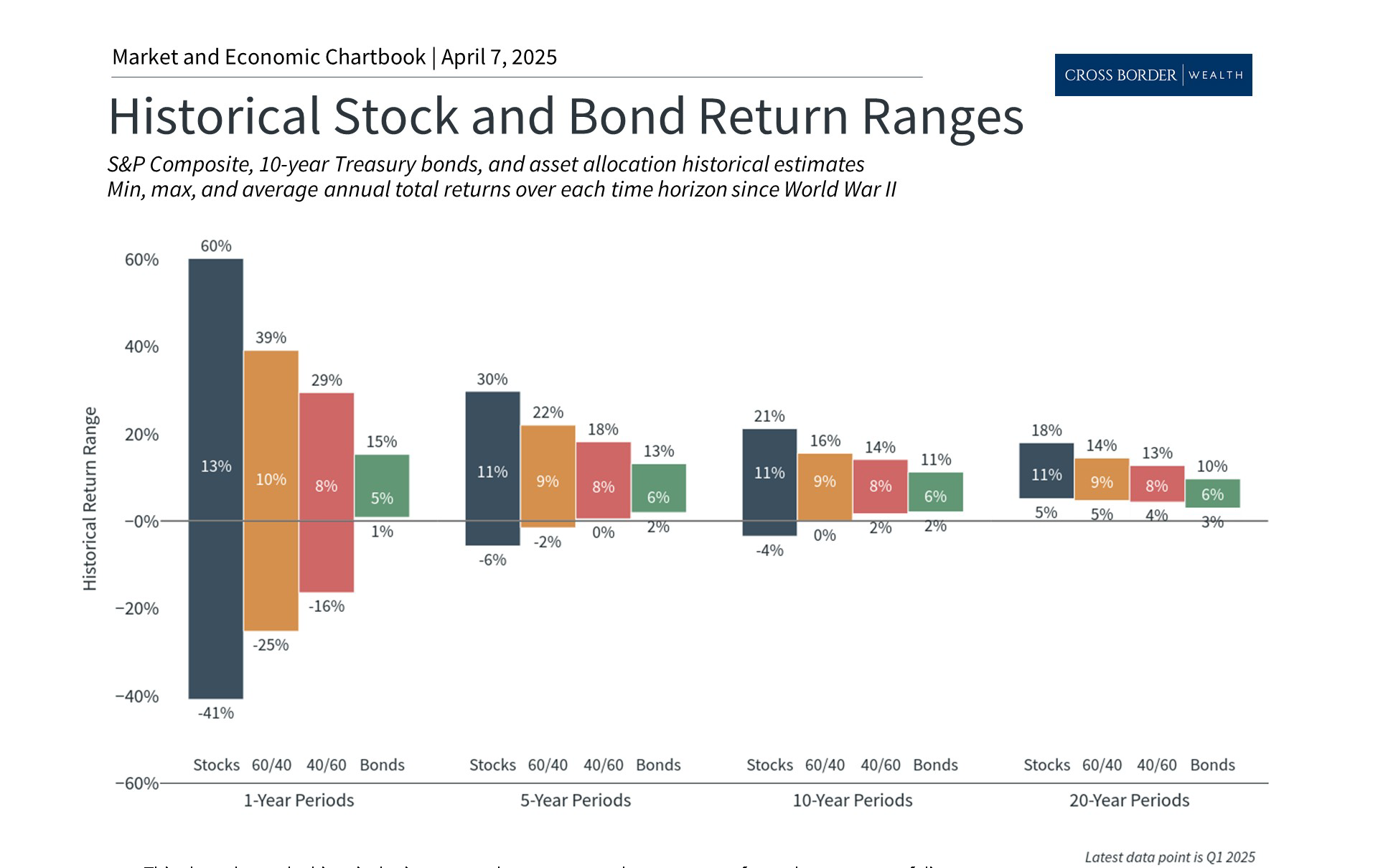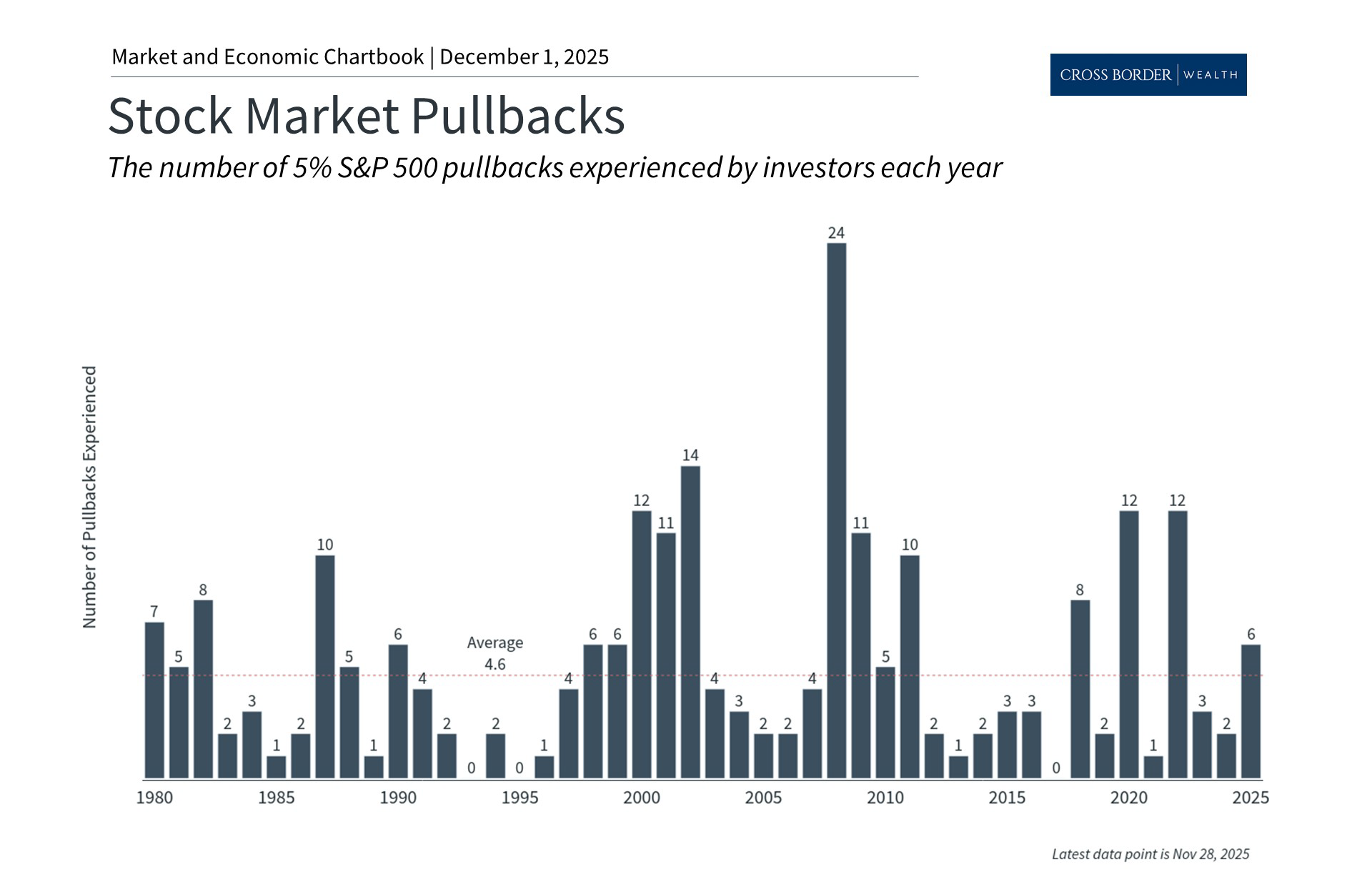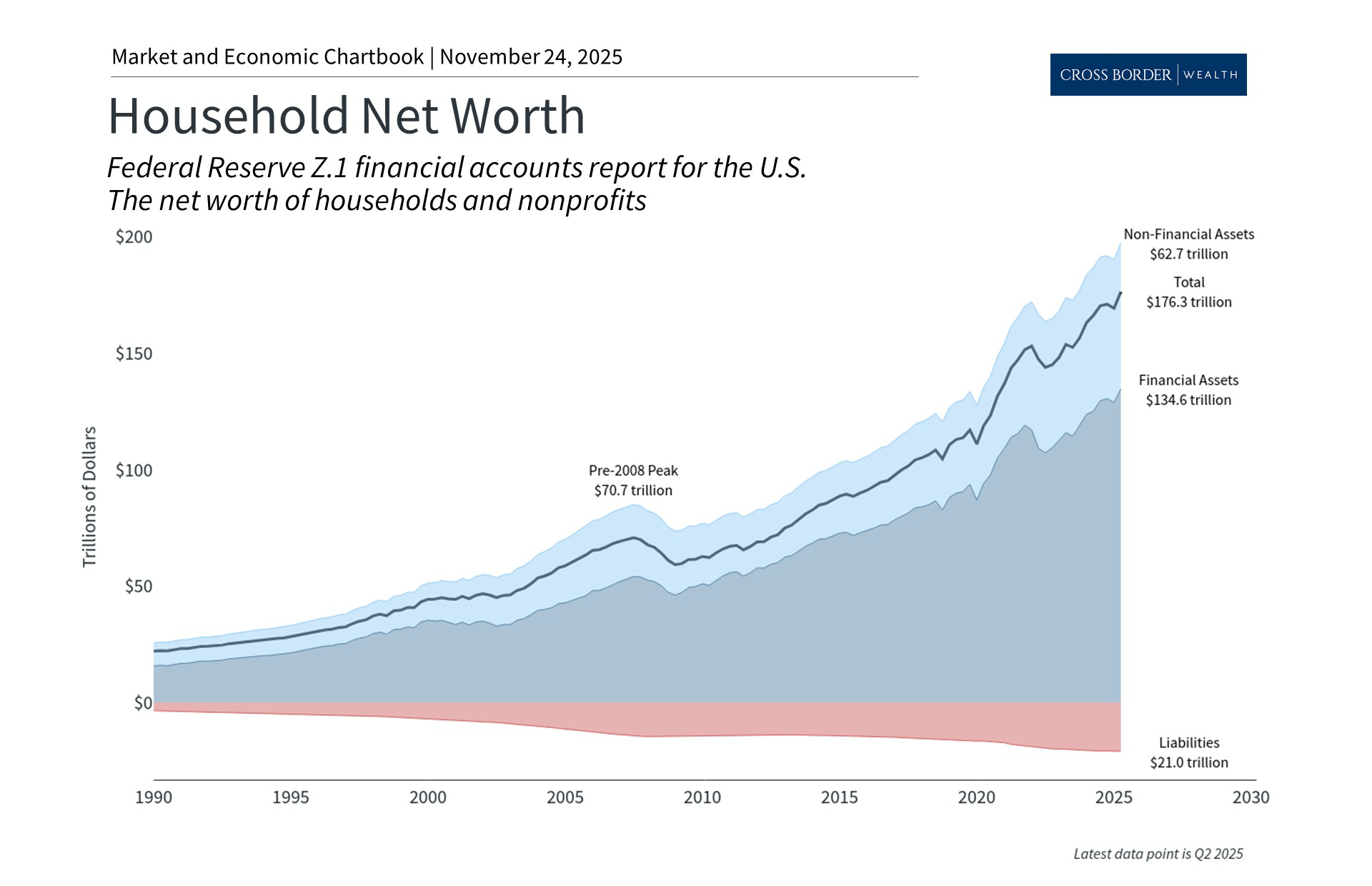The Importance of Offense and Defense in Challenging Markets
- Market Insights
- 6 mins

Get investing insights for US-connected global citizens.
Book a free consultation with our cross-border advisors.
Concerns that a trade war will lead to a recession have spread around the globe. The possibility of retaliatory tariffs is on investors’ minds, with China responding with counter-tariffs, increasing the odds of a worst-case trade war scenario. Markets in Asia and Europe have declined alongside U.S. stocks, and there has been a “flight to safety” as bond prices rise and interest rates fall.
Portfolio balance and financial planning are even more important today

Past performance is not indicative of future results
In sports as well as investing, a winning strategy requires a combination of both offense and defense. Defense involves maintaining a portfolio that can withstand different phases of the market cycle. Stock market uncertainty and unexpected life events are inevitable, so always being ready to play defense is important.
Offense, on the other hand, involves taking advantage of market opportunities that emerge from changing conditions. The irony is that while periods of market uncertainty may be unpleasant, they also represent times when asset prices and valuations are the most attractive. Ultimately, portfolios that are tailored toward financial goals need both offense and defense. How can investors position in today’s market environment to both protect from risk and take advantage of opportunities?
Two of the key principles of long-term investing are diversification and maintaining a long time horizon. This is showcased in the accompanying chart which depicts the range of historical outcomes across stocks, bonds, and diversified portfolios. It also shows how these ranges change when time horizons are increased. For instance, it’s easy to see that over just one-year periods, the stock market can vary significantly, from gaining 60% in 1983 when the market recovered from stagflation fears, to -41% during the global financial crisis.
Moving beyond just one-year periods and a stock-only portfolio underscores why these are powerful ways to think about investing and financial planning. Diversifying might reduce the maximum returns an investor can experience, but it also reduces risk. This is evident in the balanced portfolio consisting of 60% stocks and 40% bonds. So far this year, the S&P 500 is 13% lower, but a 60/40 mix of these indices has declined only 4.6%.
After all, the goal is not simply to grow a portfolio at the fastest but most volatile rate, but to have the highest possible probability of achieving your financial goals. A diversified portfolio historically has a much narrower range of outcomes, allowing investors to better plan toward their goals.
Similarly, extending your time horizon by even a few years can have a significant impact on the range of outcomes. History shows that, since World War II, there has not been a 20-year period in which any of these assets and portfolios have experienced annual declines, on average. The same is true over 10-year periods for many diversified asset allocations. While this is only illustrative and is no guarantee of future performance, it clearly shows the importance of thinking long-term.
Volatility can create opportunities

Past performance is not indicative of future results
What about market opportunities? The accompanying chart shows that the VIX index, often known as the stock market’s “fear gauge,” can spike on a periodic basis. These peaks correspond to sharp drops in the market, such as in 2008 or 2020. These are times when markets are the most nervous and, in many cases, investors feel as if the situation will never stabilize.
This chart also shows the returns of the S&P 500 over the next year. As we discussed above, there is never any certainty about returns over any single year for the stock market. However, it’s clear that the greatest market opportunities often emerge when investors are the most worried. This is the heart of the famous Warren Buffett quote to “be fearful when others are greedy, and greedy when others are fearful.”
This is especially true if markets face liquidity rather than solvency concerns. Liquidity problems emerge when market declines force some investors - specifically those who use leverage, or borrowed funds - to sell other assets. In these situations, prices may decline even when the underlying fundamentals of an asset remain unchanged. These are classic cases where short-term market moves become disconnected from long-term outlooks, creating opportunities for patient investors.
It's important to note that this is not an argument for market timing. Even when the VIX is high, there is no guarantee that markets will rebound quickly. Instead, investors should view this as additional support for taking a portfolio perspective. Market downturns often occur when valuations are the most attractive, and thus it can make sense to shift toward – not away – from these assets. Of course, what makes sense for a given portfolio depends on the specific circumstances.
Valuations are more attractive today

Past performance is not indicative of future results
So, which assets have helped this year, and which are more attractive today? Bonds have played an important role this year as interest rates have fallen, helping to balance portfolios and partially offset declines in other asset classes. Bonds are able to do this because they typically exhibit lower volatility than stocks and often move in the opposite direction. For this reason, investors often say that “bonds zig when stocks zag.” Holding the right balance of “uncorrelated” assets helps investors prepare for challenging times.
Valuations are more attractive today after multiple years of strong stock market returns. While it is still unclear where earnings will settle after accounting for tariffs, the price-to-earnings ratio of the overall S&P 500 has declined to 20.7x. Some sectors such as Information Technology, Communication Services, and Consumer Discretionary, have seen multiples decline more amid the broader pullback.
Interestingly, assets such as gold, which often serve as safe havens, have struggled more recently. Gold prices rose to new all-time highs earlier this year, resulting in double-digit returns over the past year. Investors are typically drawn to this asset class for many of the same reasons they are interested in bonds – it can serve as a store of value in times of uncertainty. However, gold prices have also retreated as economic fears have weighed on all commodities. This highlights the importance of not focusing only on a single asset class, but viewing it from a holistic portfolio perspective.

Cross Border Wealth is a SEC-registered investment adviser which may only transact business in those jurisdictions in which it is registered or qualifies for an exemption or exclusion from registration requirements.
Cross Border Wealth may discuss and display charts, graphs, formulas, stock, and sector picks which are not intended to be used by themselves to determine which securities to buy or sell, or when to buy or sell them. This specific information is limited and should not be used on their own to make investment decisions.
All information provided in this article is for educational purposes only and does not intend to make an offer or solicitation for the sale or purchase of any specific securities, investment, or investment strategies. Please ensure to first consult with a qualified financial adviser and or tax professional. Further, please note that while said information has been obtained from known sources which are believed to be reliable, none of these are guaranteed.


